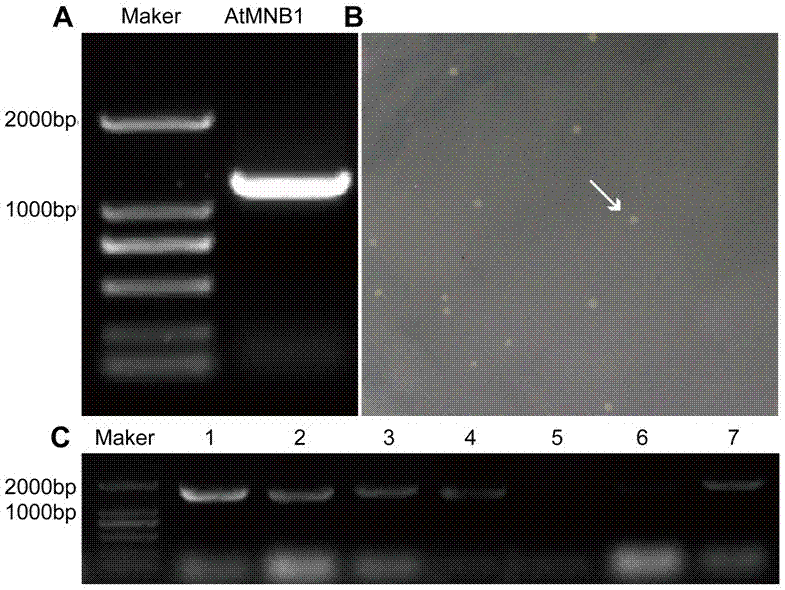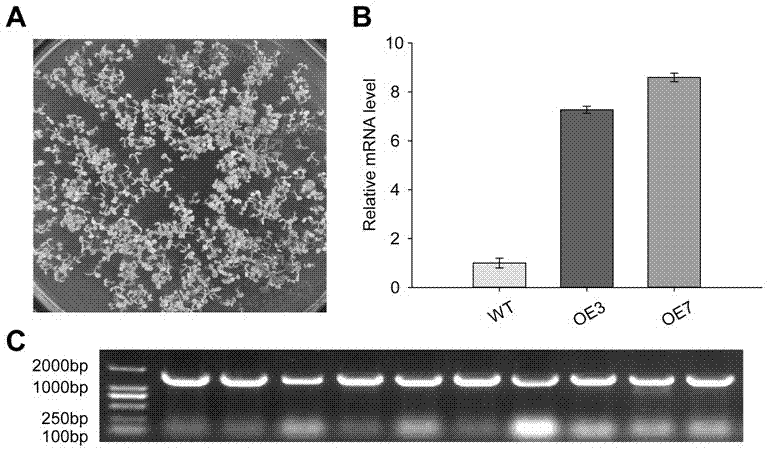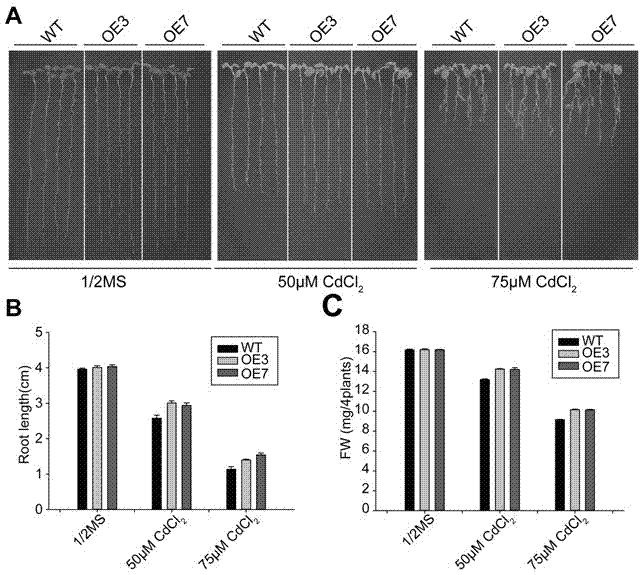Gene for restoring cadmium contaminated soil and improving cadmium tolerance of plants and application of gene
A cadmium-contaminated soil and plant technology, applied in plant gene improvement, application, plant peptides, etc., can solve problems such as production reduction, crop pollution, and impact on sustainable development of agriculture and human society
- Summary
- Abstract
- Description
- Claims
- Application Information
AI Technical Summary
Problems solved by technology
Method used
Image
Examples
Embodiment 1
[0036] MNB1 Acquisition of its coding gene
[0037] About 50-100 mg of wild-type Colombian ecotype Arabidopsis seedlings were used as materials, the total RNA was extracted with Trizol, and the RNA concentration was detected with an ultraviolet spectrophotometer. According to the instructions of the RevertAidTM First Strand cDNA Synthesis Kit (Fermentas Company), the first strand of cDNA was synthesized using the extracted total RNA as a template. Using the extracted first-strand cDNA as a template, carry out the following PCR reaction: 20 μl reaction system, containing 2 μl of 10×PCR buffer, 0.4 μl of dNTPs (10mM) mixture, 2 μl each of primer 1 and primer 2, and Tag enzyme (5U / μl) 0.2 μl, and add double distilled water to the rest to 20 μl. in,
[0038] Primer 1: F 5' NNNGGTACCATGTCTCGATTTGCTATCTTAGTAA3';
[0039] Primer 2: R 5' NNNGAATTCCTAATATTTGATGTAAGCAACAGAA3'.
[0040] Amplify on the Life Express gene thermal cycler: first pre-denaturation at 94°C for 5 min, then ...
Embodiment 2
[0042] Breeding cadmium-tolerant Arabidopsis
[0043] 1, MNB1 Gene Overexpression Transgenic Lines MNB1-OE1, OE2 the acquisition
[0044] To further verify the function of this gene in the regulation of heavy metal cadmium stress in plants, we constructed MNB1 Gene overexpression vector (35S: MNB1 ). Firstly, the target fragment is amplified. The wild-type Arabidopsis was normally cultured on ½MS medium for two weeks, the total RNA of the plant was extracted, reverse-transcribed to synthesize cDNA, and the synthesized cDNA was used as a template for PCR to amplify a sufficient amount of the target product, see figure 1 a. Using the PCR product as a template, the second amplification was carried out for the purpose of introducing enzyme cutting sites. The PCR product and the vector pCAMBIA1301 were digested and recovered, and then the recovered and purified target DNA fragment and the vector were ligated overnight with T4 DNA ligase. Transfer the above connection s...
PUM
 Login to View More
Login to View More Abstract
Description
Claims
Application Information
 Login to View More
Login to View More - R&D
- Intellectual Property
- Life Sciences
- Materials
- Tech Scout
- Unparalleled Data Quality
- Higher Quality Content
- 60% Fewer Hallucinations
Browse by: Latest US Patents, China's latest patents, Technical Efficacy Thesaurus, Application Domain, Technology Topic, Popular Technical Reports.
© 2025 PatSnap. All rights reserved.Legal|Privacy policy|Modern Slavery Act Transparency Statement|Sitemap|About US| Contact US: help@patsnap.com



